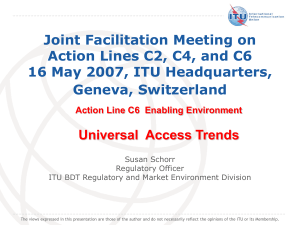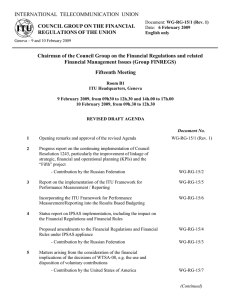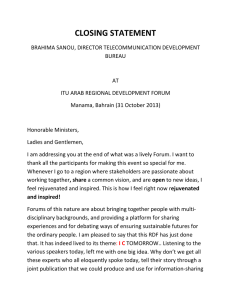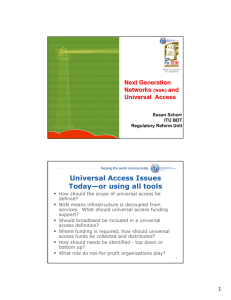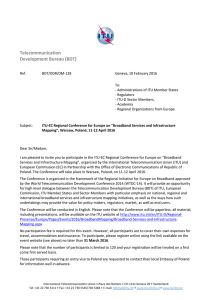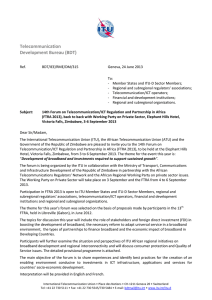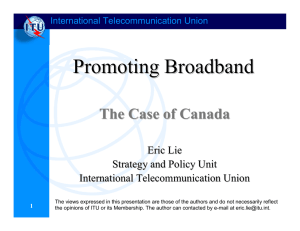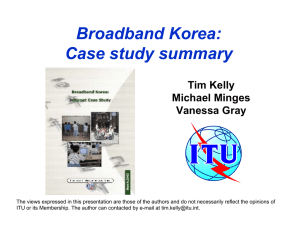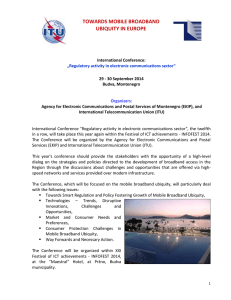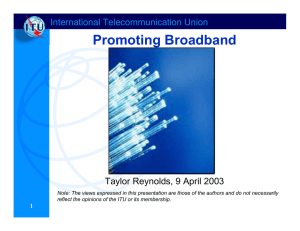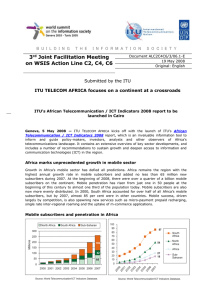Joint Facilitation Meeting on WSIS Action Line C2, C4, C6
advertisement
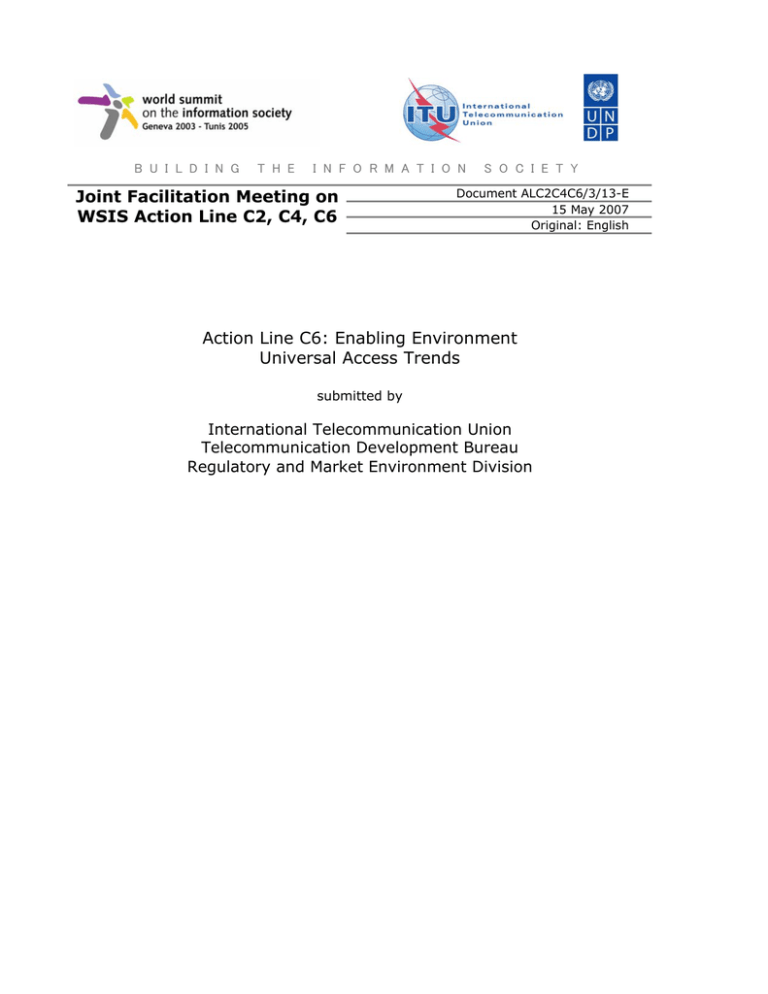
B U I L D I N G T H E I N F O R M A T I O N Joint Facilitation Meeting on WSIS Action Line C2, C4, C6 S O C I E T Y Document ALC2C4C6/3/13-E 15 May 2007 Original: English Action Line C6: Enabling Environment Universal Access Trends submitted by International Telecommunication Union Telecommunication Development Bureau Regulatory and Market Environment Division Joint Facilitation Meeting on Action Lines C2, C4, and C6 16 May 2007, ITU Headquarters, Geneva, Switzerland Action Line C6 Enabling Environment Universal Access Trends Susan Schorr Regulatory Officer ITU BDT Regulatory and Market Environment Division International Telecommunication Union The views expressed in this presentation are those of the author and do not necessarily reflect the opinions of the ITU or its Membership. Universal Access Issues Today—or using all tools How should the scope of universal access be defined? What should universal access funding support? Should broadband be included in a universal access definition? Where funding is required, how should universal access funds be collected and distributed? How should needs be identified - top down or bottom up? What role do not-for-profit organizations play? 2 1 Telephone and Internet Users World, Millions 2'500 2'000 Mobile 1'500 Fixed line 1'000 Internet Users 500 Broadband subscribers by region, 2005 0 1991 1995 1997 1999 2001 2003 2005 Africa 0.15% Europe & CIS countries 30.63% The Americas 31.07% Arab States 0.44% Asia & Pacific 37.71% Source: ITU World Telecommunication Indicators Database 3 Treatment of PUBLIC provision of wireless local area network services in the 2.4GHz band, World, 2005 100% 2 4 WLAN services in these bands are not allowed 3 80% 9 7 6 A license is required 13 60% 40% 20% 10 3 5 3 1 Can be offered WITHOUT a license and WITHOUT prior registration or notification E ur op e/ C IS P ac ifi c A si a st at es A ra b A m er ic as 0% A fr ic a Can be offered WITHOUT a license but WITH prior registration or notification 5 4 6 Source: ITU World Telecommunication Regulatory Database 4 2 Universal Access Funding and Disbursement Eroding revenues from international and long distance calls coupled with decline of accounting rate system and rise of VoIP Universal access funds based on operator revenue, levies on end users, license and spectrum fees, general taxation Who is supported? End users, Incumbents, Small operators, NGOs and Not for Profits Top-down or bottom up approach? Micro-finance 5 Blueprint for Universal Access Trends Greater reliance on sector reform Government funding collected and disbursed in innovative ways Leverage technological developments, new actors, innovative financing (micro-credit) Ensure backbones deployed 6 3 7 Universal Access Module The Key role that regulatory reform plays in promoting universal access/service - Fostering a competitive market to address the “market efficiency gap” - Addressing the true access gap: government financial intervention to achieve universal access - The role of the government as a facilitator, how in some cases it can do so without providing financial support, e.g., to bring a broad range of actors together to develop national broadband internet backbones or establish national and regional Internet Exchange Points (IXPs). Universal service / access policies in the context of increasing deployment of broadband and Internet; including to schools, rural areas, health facilities, youth, women, indigenous people and disabled users. Universal service / access mechanisms in the context of changing interconnection modalities associated with next-generation networks. The provision of emergency services in both traditional telecommunications and IP/NGN environments. The design of targeted subsidies; risks and management models for universal service / access funds. Examples and case studies of operator-specific strategies for planning universal access projects The roles of public and private sectors, and NGOs, including for example initiatives for local open access networks for communities and municipalities. 8 4 Thank you! susan.schorr@itu.int 9 5
